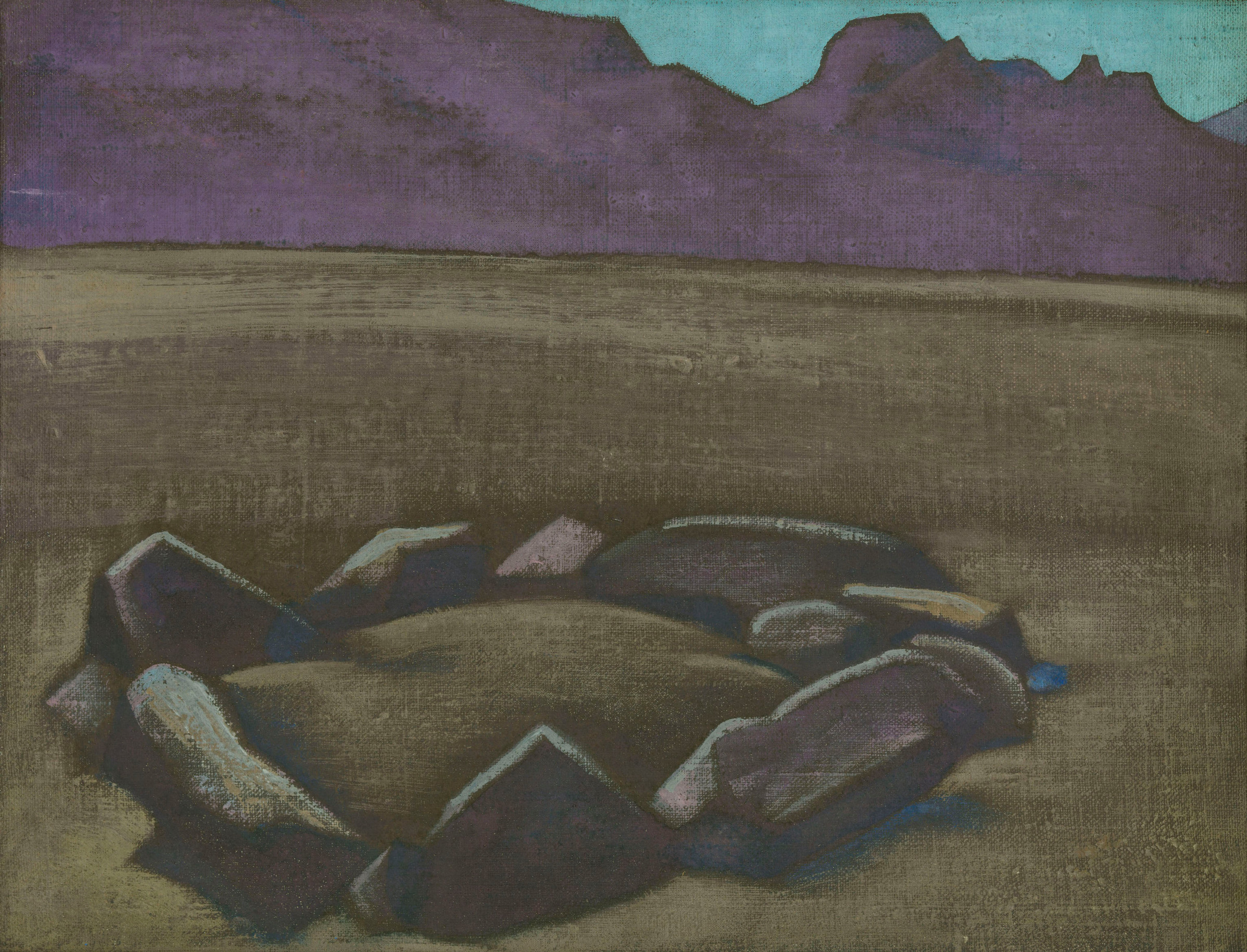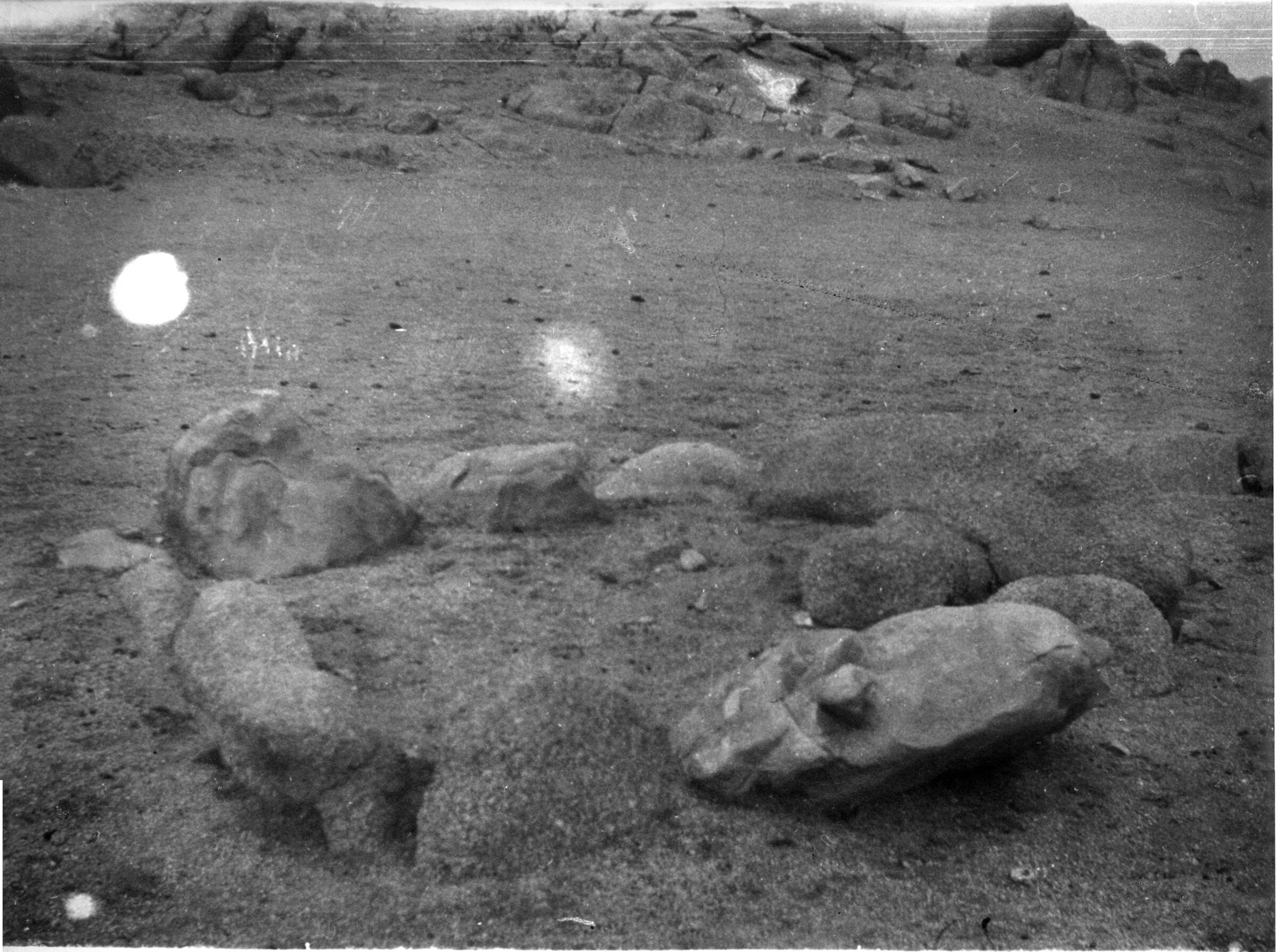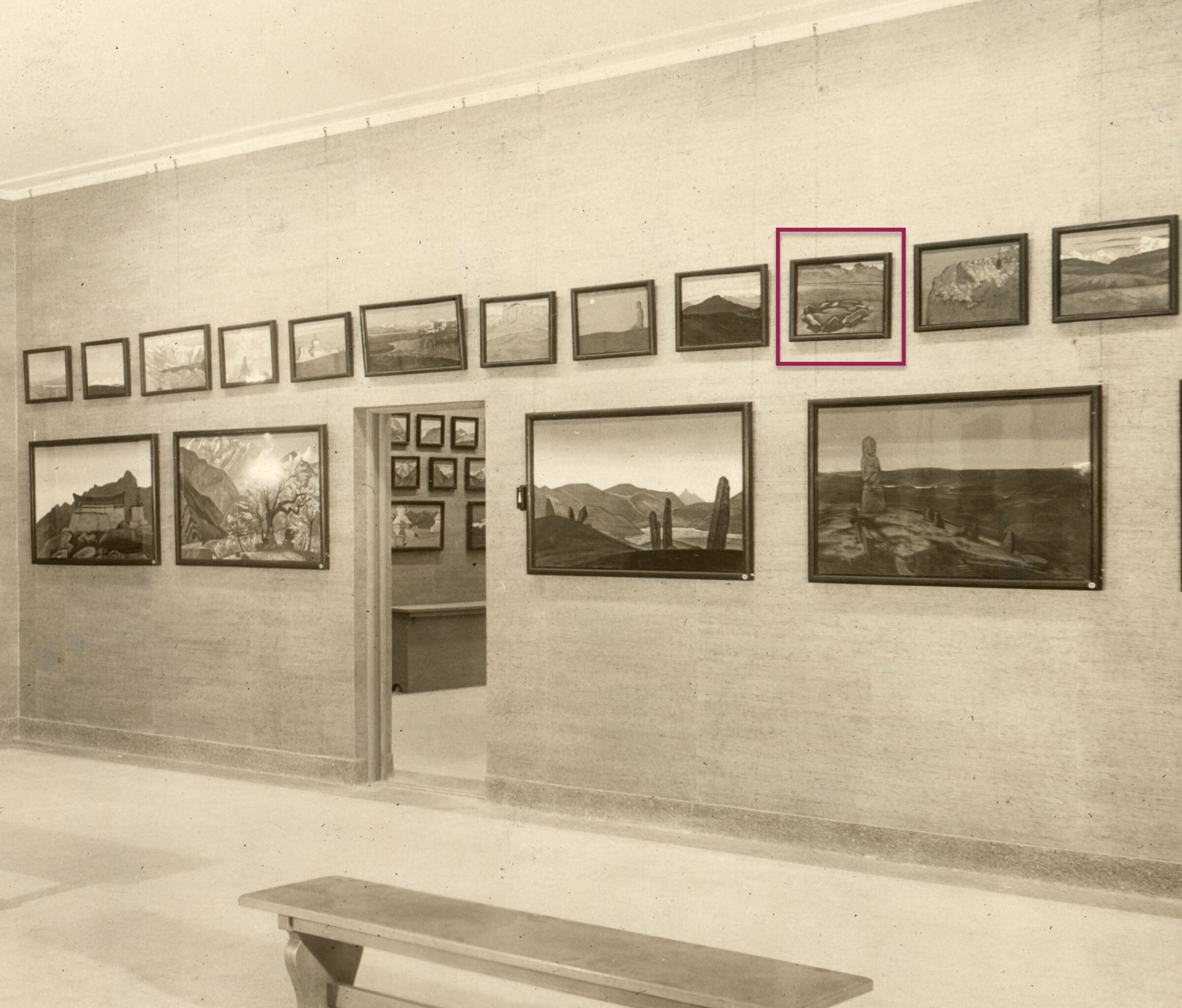ÉCOLE DE PARIS AND OTHER MASTERS
4 December 2024

* 4. ROERICH, NICHOLAS (1874-1947)
Grave in the Trans-Himalayas. 1928, numbered and dated by the artist on the reverse "N 59/1928".
Tempera on canvasboard, 31 by 40.5 cm.
SOLD FOR 94,452 GBP
Provenance: Collection of the Roerich Museum, New York, 1929–1935.
Collection of Nettie and Louis Horch, New York, until 1957.
Collection of Dr. Carlos Giro, New York, until 2005.
Acquired from the above by the previous owner.
Private collection, USA.
Thence by descent.
Private collection, USA.
Exhibited: Roerich Museum (permanent collection), New York, 1929–1935.
Literature: Roerich Museum catalogue, 8th edition, New York, Roerich Museum, 1930, p. 35, no. 887.
On March 23, 1928, the expedition was in the region of the Tibetan Great Lakes, along the route used by pilgrims from the nomad districts of Tibet to the sacred Mount Kailas. Near the great salt lake of Pang-gong tsho-cha, the party came across several megalithic monuments. “Near our camp, Professor Roerich discovered several graves probably belonging to the neolithic epoch. They were enclosed by stones arranged in a square. Each grave was laid out from east to west, and at its eastern extremity was a large bowlder. Evidently, the body was buried head eastward. <...> It was a matter of great regret that Tibetan authorities strongly objected to scientific excavations, and we had to content ourselves with taking photographs and surveying the site. The local population was wholly unaware of the existence of the graves. <...> The place was called Ratri and is twenty-two miles distant from Doring and four days from Shentsa Dzong, the administrative centre of the Nag-tshang district.” (Roerich, George. Trails to Inmost Asia. New Haven: Yale University Press, 1931, p. 417). The expedition photograph of this grave (ill.1) was published in Trails to Inmost Asia on page 416+. The scene was most likely painted later that year in Darjeeling, and in 1929, it was already on display in the Roerich Museum in New York (ill.2, top row third from left).
In this outstanding work, Roerich yet again combines his scholarly knowledge of the local landscape and ethnography with his poetic vision, presenting us with a mystic landscape rooted in reality. Despite the grave subject, the artist presents a radiant image of eternity. The grey background is almost translucent; the shades of pink and blue highlight the mysterious stones. The presence of the bewitching mountains emphasises the feeling of everlasting life. The artist's genius inspires Faith and Hope, even when he stands over the ancient gravestones.
When Roerich arrived in the United States on his return from the Central Asian expedition in June 1928, he was received by President Hoover at the White House. Hoover enquired about the outcome of the expedition and was presented with one of the paintings Roerich had brought back from his journey, the Himalayas. Soon after the Roerich Museum was opened and Roerich's canvases painted during the expedition were exhibited there. After seeing the exhibition, Albert Einstein wrote to Roerich in a letter dated 29 January 1931: "I am sincerely delighted by your art and can say without exaggeration that no landscapes have ever made such a profound impression on me as these paintings”.
We are grateful to Gvido Trepsa, Director of the Nicholas Roerich Museum, New York, for his assistance with cataloguing this work.
Illustration 1. The expedition photograph of the grave, Trans-Himalayas.
Illustration 2. The present lot on display in the Roerich Museum.


Notes on symbols:
* Indicates 5% Import Duty Charge applies.
◎ Indicates the lot is located outside the UK. Successful bidders would collect their lots outside the UK after payment.
Ω Indicates 20% Import Duty Charge applies.
§ Indicates Artist's Resale Right applies.
† Indicates Standard VAT scheme applies, and the rate of 20% VAT will be charged on both hammer price and premium.